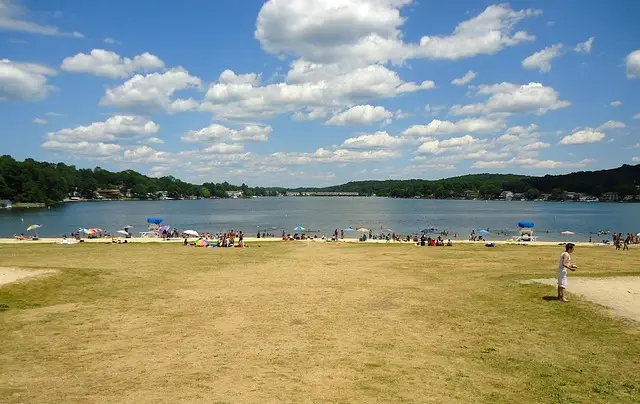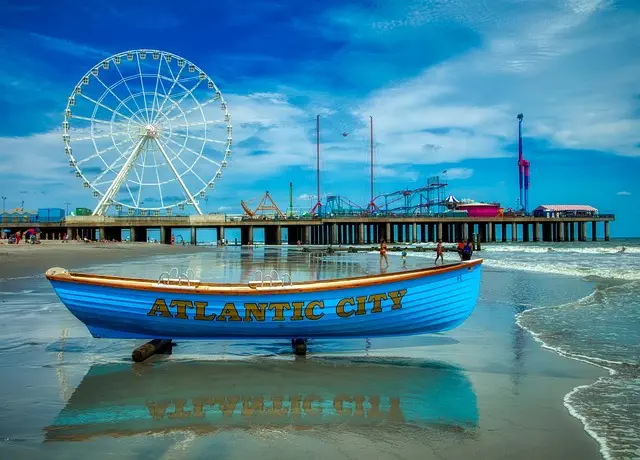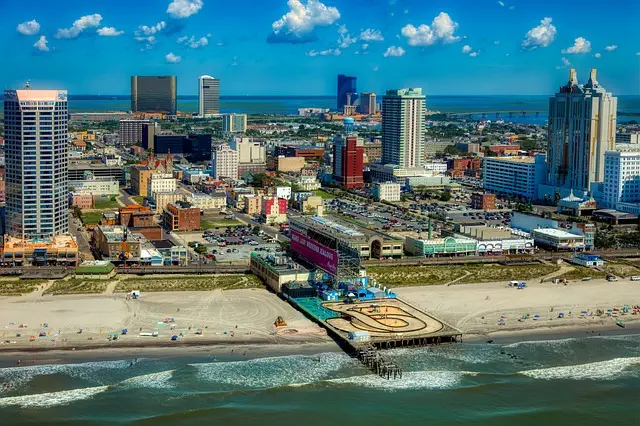The Albany Street Bridge, a historic landmark in Middlesex County, New Jersey, since 1907, symbolizes the region's engineering and architectural heritage. Strategically located over the Raritan River, it facilitates local trade, cultural exchange, and economic growth. The bridge connects New Brunswick with Sayreville, fostering unity, accessibility, and community development. Restored and updated to preserve its beauty and functionality, it now boasts enhanced lighting, new handrails, and paved walking paths. Serving as a hub for tourists exploring Middlesex County's rich heritage, the bridge is poised to become a symbol of sustainable development through smart technologies, green spaces, and art installations.
The Albany Street Bridge, spanning the bustling Raritan River in New Brunswick, Middlesex County, NJ, is more than just a crossing. With a rich historical background, it serves as a vital link between communities on either side, reflecting the county’s evolving landscape. This article explores the bridge’s architectural design, role in community connection, and its transformation through restoration efforts and modern updates, while highlighting its appeal to tourists and local residents alike. We also delve into future prospects and community engagement strategies for this iconic Middlesex County landmark.
- Historical Background of Albany Street Bridge
- Location and Significance in Middlesex County
- Architectural Design and Construction
- Role in Connecting Communities
- Restoration Efforts and Modern Updates
- Tourism and Local Appeal
- Future Prospects and Community Engagement
Historical Background of Albany Street Bridge

The Albany Street Bridge, a historic landmark in New Brunswick, Middlesex County, New Jersey, has stood as a testament to the region’s rich engineering and architectural heritage for over a century. Constructed in 1907, this sturdy structure replaced an earlier bridge that connected the bustling city of New Brunswick with its neighboring areas. The need for a more robust and efficient crossing became apparent as the local economy thrived and the population grew, leading to increased traffic and demand for improved transportation links.
Designed by renowned engineers and architects of the time, the Albany Street Bridge is an exemplary representation of early 20th-century bridge construction. Its elegant design and solid craftsmanship have withstood the test of time, making it a beloved symbol of New Brunswick’s history. The bridge’s strategic location over the Raritan River has facilitated the movement of goods and people, contributing significantly to the regional economy and the cultural exchange between Middlesex County and its surroundings.
Location and Significance in Middlesex County

The Albany Street Bridge stands as a significant landmark in Middlesex County, New Jersey. Spanning across the bustling riverside, it connects the vibrant communities on both sides, fostering a sense of unity and accessibility within the county. This strategic location makes it a vital link for local folks and visitors alike, enhancing the overall landscape of New Brunswick’s riverfront.
In terms of history, the bridge has witnessed the evolution of Middlesex County over the years, serving as a gateway to the region’s rich cultural tapestry. Its presence enables easy navigation, promotes economic growth, and underscores the county’s commitment to fostering a connected and thriving community. As a result, the Albany Street Bridge not only adorns the skyline but also symbolizes the resilience and spirit of New Brunswick within Middlesex County, NJ.
Architectural Design and Construction

The Albany Street Bridge, a notable landmark in New Brunswick, Middlesex County, New Jersey, showcases an impressive architectural design that has stood the test of time. This structural marvel is characterized by its elegant curvature and robust construction, seamlessly blending aesthetics with functionality. The bridge’s design incorporates modern engineering principles while paying homage to traditional architectural elements, creating a unique visual experience for residents and visitors alike.
Construction of the Albany Street Bridge involved meticulous planning and execution. Built to withstand the region’s diverse weather conditions, the bridge utilizes high-quality materials and advanced construction techniques. Its sturdy foundation and carefully engineered joints ensure stability and longevity, making it a safe passage for pedestrians and vehicles. The project’s successful completion is a testament to the collaborative efforts of skilled engineers, architects, and builders who brought this essential infrastructure to life in the heart of New Brunswick.
Role in Connecting Communities

The Albany Street Bridge serves as a vital link between communities in Middlesex County, New Jersey. This iconic structure connects the cities of New Brunswick and Sayreville, fostering seamless interaction and enhancing the daily lives of residents. Its significance goes beyond mere transportation; it symbolizes the unity and accessibility that define the region’s landscape.
The bridge not only facilitates travel but also encourages economic growth and cultural exchange. It enables local businesses to thrive by providing easier access to a broader customer base. Additionally, it serves as a gathering place for community events, promoting social cohesion and a strong sense of shared identity among Middlesex County residents.
Restoration Efforts and Modern Updates

The Albany Street Bridge, a historic landmark in Middlesex County, New Jersey, has undergone significant restoration efforts over the years to preserve its beauty and functionality. These initiatives have been crucial in revitalizing not just the bridge but also the surrounding areas, reflecting the region’s commitment to maintaining its rich heritage. The recent modern updates include enhanced lighting systems that illuminate the bridge at night, creating a visually stunning spectacle while ensuring better safety for pedestrians and cyclists.
Additionally, accessibility improvements have been made, such as installing new handrails and paving the walking paths, making it more welcoming to all users. These restoration and update projects not only honor the bridge’s historical significance but also cater to the needs of contemporary residents and visitors, balancing preservation with practicality in the vibrant cityscape of New Brunswick.
Tourism and Local Appeal

The Albany Street Bridge in New Brunswick, Middlesex County, New Jersey, is more than just a crossing; it’s a local landmark that attracts tourists and residents alike. Its picturesque design and strategic location along the Delaware River make it a prime spot for both leisurely walks and scenic photo opportunities. The bridge offers a unique blend of history and modern charm, appealing to visitors seeking to immerse themselves in the region’s rich cultural heritage.
New Brunswick’s vibrant downtown area, with its diverse culinary scene and lively festivals, further enhances the appeal of the Albany Street Bridge. Tourists can easily combine a stroll across the bridge with explorations of local shops, galleries, and historic sites, making it an ideal starting point for discovering the charming and eclectic spirit of Middlesex County.
Future Prospects and Community Engagement

The Albany Street Bridge, a significant landmark in New Brunswick, NJ, offers a glimpse into the future prospects of the region. With its strategic location connecting various parts of Middlesex County, there’s immense potential for community engagement and economic growth. Local residents and stakeholders are actively involved in discussions to enhance the bridge’s functionality and aesthetics, ensuring it becomes a vibrant hub that fosters both social interaction and sustainable development.
Future plans include integrating smart technologies to improve traffic flow and pedestrian safety, as well as incorporating green spaces and artistic installations that celebrate the cultural diversity of New Brunswick. Community engagement initiatives aim to involve residents in decision-making processes, empowering them to shape the bridge’s transformation and contribute to a more inclusive and vibrant urban landscape within Middlesex County New Jersey.






